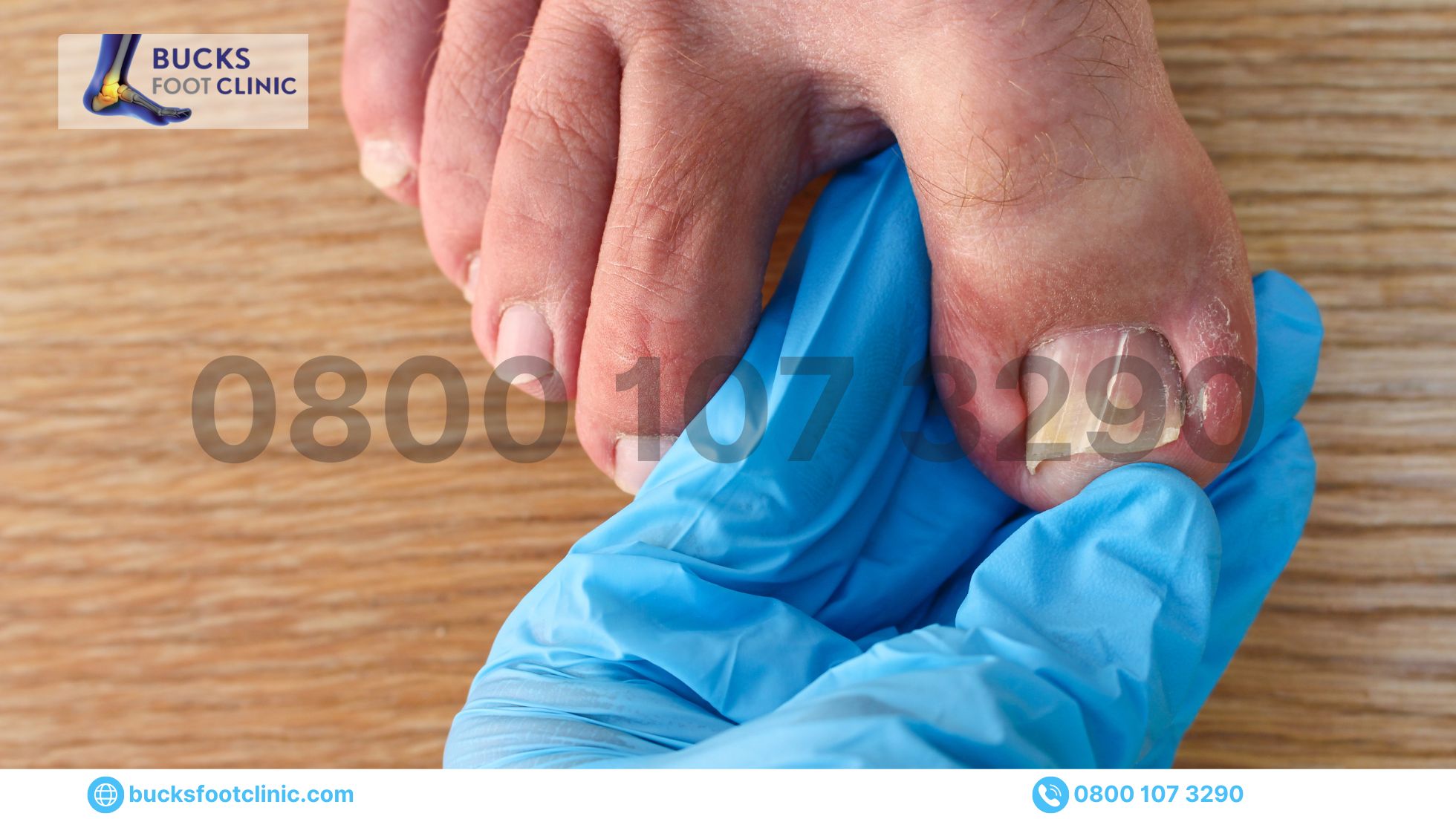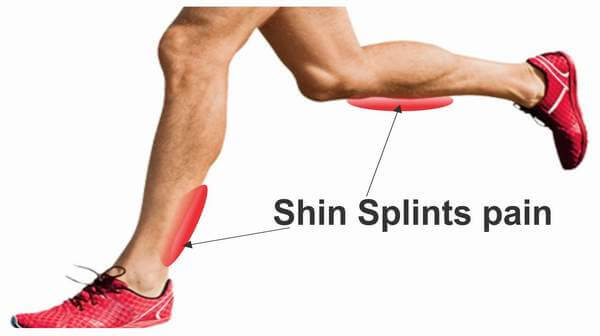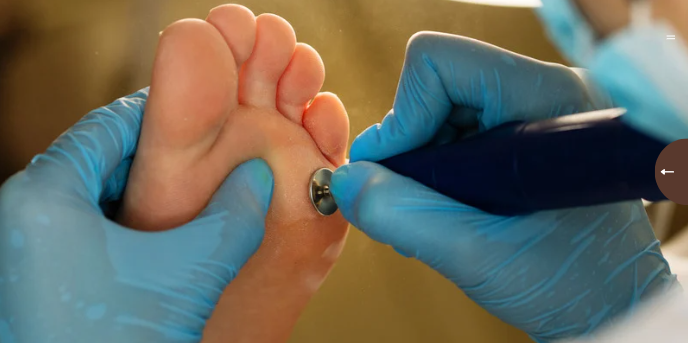
Experiencing discomfort in the arch area can significantly impact your daily activities. Gaining insights into its root causes, exploring effective exercises, and discovering orthotic solutions can lead to alleviating this discomfort and enhancing your overall quality of life. In this comprehensive guide focused on “Foot Pain Diagnosis,” we will delve deep into the nuances of arch pain, offer valuable perspectives on its diagnosis and treatment, and acquaint you with the expert services provided by Bucksfoot.
Understanding Arch Pain
In the UK, foot problems are quite common, with around 1 in 5 people experiencing foot pain at some point in their lives. Among these, issues related to arch pain stand out as a significant concern. Additionally, a study conducted by the National Health Service (NHS) in the UK revealed that foot pain affects approximately 1 in 10 people aged 16 and over. This emphasises the need for comprehensive knowledge about arch pain and its management strategies.
Arch pain can range from mild discomfort to debilitating pain, making it essential to address its causes and treatments. It often arises due to various factors, including improper footwear, overuse, biomechanical imbalances, and certain medical conditions. Understanding the distinct factors that contribute to arch pain is the first step towards finding effective solutions.
Several factors can lead to arch pain, including:
Improper Footwear: Wearing shoes with inadequate support or incorrect fit can strain the arch and lead to discomfort.
Overuse: Engaging in activities that involve prolonged standing, walking, or running can strain the arch and cause pain.
Flat Feet: Individuals with flat feet may experience arch pain due to the lack of natural arch support.
Plantar Fasciitis: This common condition involves inflammation of the plantar fascia, which can lead to arch pain.
Injuries: Trauma or injuries to the foot can result in arch pain.
Diagnosis and Treatment
Diagnosing Arch Pain: For individuals grappling with persistent arch pain, it’s imperative to prioritise professional diagnosis. A proficient podiatrist will undertake a meticulous assessment, encompassing the observation of your gait. Additionally, they’ll also utilise imaging tests, and review of your medical history. This holistic methodology serves to pinpoint the root cause of your arch pain, contributing to effective diagnosis and treatment for foot pain.
Treatment Approaches: Once the cause is determined, tailored treatment can begin. Common approaches include:
- Taking a break and using ice can assist in diminishing inflammation and alleviating discomfort in the affected foot.
- Physical Therapy: Targeted exercises and stretches can strengthen the muscles supporting the arch and alleviate discomfort.
- Orthotic Inserts: Custom orthotics provide arch support and enhance foot alignment, reducing strain and pain.
- Footwear Modification: Choosing supportive and well-fitting shoes can significantly relieve arch pain.
- Medications: Pain and inflammation can be managed with the assistance of nonsteroidal anti-inflammatory drugs (NSAIDs).
Effective Arch Pain Exercises
Engaging in specific exercises can aid in strengthening the muscles of the foot and alleviating foot pain diagnosis. Here are a few effective exercises to consider for addressing your foot pain diagnosis:
- Arch Raises: While seated, place a tennis ball under your arch. Gently press down to flatten the arch, then release.
- Towel Curls: Lay a small towel on the floor. Use your toes to scrunch the towel toward you, engaging your arch muscles.
- Calf Stretches: Stretching the calf muscles can indirectly benefit your arch and assist in managing foot pain. Position yourself in front of a wall, then step one foot back and lean your body forward.
Orthotic Solutions
Custom orthotic inserts are a highly effective solution for addressing arch pain, offering precise and targeted support to the affected area. These specialised inserts are meticulously designed to conform to the unique contours of your foot, delivering the essential support and alignment required for alleviating pain and discomfort.
Thus, when seeking comprehensive diagnosis and treatment for foot pain, Bucksfoot stands ready to provide you with expertly crafted orthotics that are tailored precisely to your individual needs. Moreover, with our dedicated approach, you can be assured of finding the relief and comfort you deserve.
Conclusion
In conclusion, the constraints of arch pain need not curtail your pursuits or compromise your ease. Therefore, through accurate foot pain diagnosis, suitable treatment and adept orthotic solutions, you can restore the pleasure of walking. So reach out to Bucksfoot for professional guidance on foot pain diagnosis and commence your expedition towards feet that are healthier and more content. Explore our website to glean further insights.
FAQs
Can I manage arch pain at home?
While mild cases of arch pain can be managed with rest, ice, and proper footwear, it’s recommended to consult a podiatrist for a thorough diagnosis and personalised treatment plan.
How long does it take to recover from arch pain?
Recovery time varies depending on the cause and severity of your arch pain. Although with the right treatment and care, many individuals experience relief within a few weeks.
Are custom orthotics effective for arch pain?
Yes, custom orthotics provide targeted support and alignment, often leading to significant improvement in arch pain and overall foot comfort.
Can arch pain be prevented?
Yes, wearing supportive footwear, engaging in regular foot exercises can help prevent arch pain. Moreover, maintaining a healthy weight is helpful as well.




Recent Comments